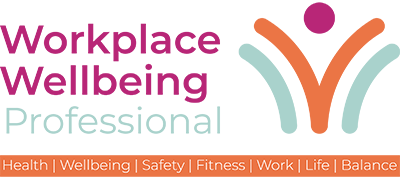Businesses are increasingly vocal about their commitment to employee wellbeing, regularly flooding the media and social media landscape with promises of support and perks. But the reality is: any wellbeing strategy is only as good as the people leading it, the leaders shaping and driving the culture of a business day-in, day-out.
If leaders don’t make wellbeing a personal priority, employees won’t buy in – so managers need to build it into their own habits, and make it clear to employees that it’s a priority for them as well as the wider organisation.
But this isn’t about overhauling your management style or becoming a wellness guru; it’s about leading by example, showing employees that wellbeing is more than just a tick-box initiative – it’s a mindset that starts at the top.
Walking the wellbeing walk
Wellbeing is critical for fostering a productive, motivated and resilient workforce. When employees feel physically and mentally well, research shows they are more engaged, creative, and capable of handling challenges. Business leaders play a pivotal role in setting the tone for wellness and must remember that employees will always follow behaviour before internal communications or strategy. Put simply, they’ll do as you do rather than as you say.
It’s very hard to function well cognitively if we don’t feel great physically (and vice versa), and leaders can send an important message to their teams by leading by example and prioritising their own health. Those who normalise healthy habits and mental wellness demonstrate that wellbeing is not only encouraged but essential. This empowers employees by creating a supportive culture that promotes work–life balance and fosters open communication. When employees see their leaders championing wellness, they feel more confident in focusing on their own.
Knowledge is power
This is not about leaders trying to be super-fit health gurus. In fact, being the superhuman with everything figured out will be isolating for your teams. Equally, it’s extremely difficult to be a good leader without physically and mentally trying to take care of yourself. Self-care comes in many forms, and practices are ever-evolving, so try and take the time to become a student of wellbeing.
Knowledge is power, and by becoming better informed in the relationship between wellness and workplace productivity, you can share and discuss important and potentially lifelong lessons as a team. Remember, they may well know more than you, so learn from them. Be open about how you’re educating yourself and the methods you’ve learned to demonstrate clearly that this is an investment worth making.
Read the room
Another valuable quality in a leader is empathy. It’s vital to be tuned into the atmosphere in a workplace, pick up on cues and unspoken dynamics, and react accordingly. The working environment significantly impacts employee wellbeing, and factors like workload, workplace culture, team dynamics, and even physical surroundings can significantly impact mental and physical health.
But what impacts one person in a certain way may well be very different for another, so it’s important leaders seek to understand this from the individual’s perspective and not make assumptions.
As a leader, it is your job to foster a culture that enables people to thrive, celebrates achievements, and creates an inclusive, respectful workplace. This starts with really listening, encouraging open dialogue, and promptly addressing concerns.
Emails are a great example of setting the tone for what’s expected of employees. If a leader needs to work long hours and tries to get work done by sending emails outside of business hours, they often say they don’t expect a reply. However, if employees can see leaders emailing and others replying, this builds habits and creates pressure to reply. Although it may be unintentional, you’re building a certain expectation, so where possible, schedule them to send at an acceptable time instead.
Of course, there will be stressful times. To perform well we need stressors that continually drive us to achieve our best, but how much stress is different for everyone, which is where intuition and empathy pay dividends. Some people thrive under the stress of a tight deadline, whereas others are at their best when things are more planned and orderly. There’s no right or wrong, it’s for the leader to understand this and then adjust their delegation and support accordingly.
The science tells us that how stress impacts us very much depends on how we view stress, so talk about this with the team. Encourage them to consider times when they’ve been at their best and really flying, then get them to think about the environment and different factors that led to that. Together, how can you replicate those conditions more frequently? You’ll never regret being honest about how things ebb and flow, and this in itself will breed improved wellbeing.
Vulnerability builds trust
In business, we often discuss creating effective teams, focusing on productivity, resilience and skills. These are all crucial to success, but to marry commercial success with a positive culture, trust is also needed, and this cannot exist without a level of vulnerability.
Be open and remind teams that, although you lead a business, you’re still human and face challenges. Sharing your hurdles is an opportunity to build that trust and sets a precedent for you to have important conversations with your team. Talk about your personal journey, the difficulties you’ve had, and crucially, the things you’ve done to overcome them.
Leaders should strive to create an atmosphere where employees can put their hands up and be honest, so work with them to create an environment for them to do so. Telling them it is a safe space is meaningless; you must demonstrate that by going first.
Build wellbeing-based conversations into your team meetings as a habit and ask for regular feedback. Although they may not always be comfortable, leaders are well-positioned to facilitate difficult conversations and identify issues that can be resolved before they escalate.
Balancing strength and a position of power with vulnerability builds trust and connection, reinforcing that wellbeing is a collective responsibility championed from the top. When employees see leaders modelling both resilience and honesty, they feel more supported to prioritise their physical and mental health and contribute authentically to a healthier, more compassionate workplace.

Charlie Sampson is a multi-award-winning leadership coach, best-selling author and Executive Director of Leadership Development & Consultancy at scarlettabbott. Prior to joining scarlettabbott, Charlie was a long-time collaborator with the consultancy and co-founder of the Business Coaching Academy (BCA).
Specialising in high performance leadership through coaching, team interventions, bespoke workshops and accredited coaching programs, he is passionate about empowering leaders to drive behavioural change, creating environments where teams thrive, and strategically shaping workplace culture. Charlie has previously worked with major clients like HSBC and Nando’s, and believes leaders are the ‘fire starters’ of positive change to help improve the world of work.


